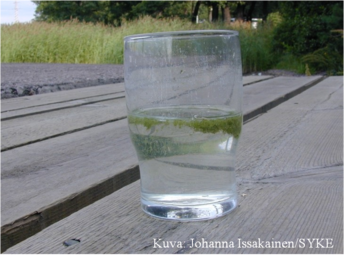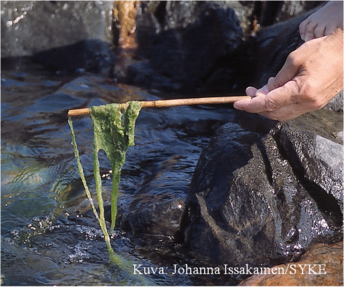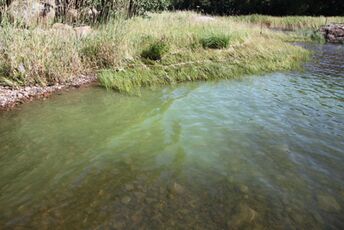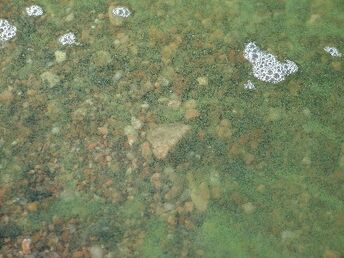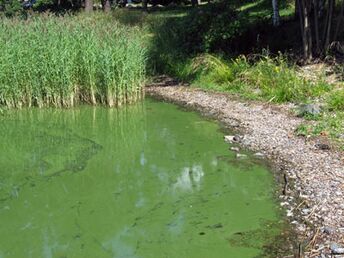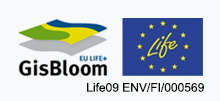This is how you assess the blue-green algae situation
Assessing the blue-green algae situation is one of the easiest observations anyone can make. Blue-green algae detection is done visually and does not require tools. The observation "No cyanobacteria" is also important and worth reporting.
Selection of observation site
To observe the blue-green algae situation, choose a place with good visibility in the water area and where the water can change freely.
Identification of cyanobacteria
Minor cyanobacteria appear in the water as small yellowish or greenish pollen-like peaks. In calm weather cyanobacteria form a gauze-like greenish film on the surface of the water.
Pollen seems misleadingly similar to cyanobacteria. However, pollen is especially present in water in spring and early summer, but cyanobacteria usually only become abundant after mid-summer when the waters warm up. If there is a lot of pollen in the water, it is usually also abundant on the beach.
The glass test and the stick test are good tools for identifying cyanobacteria.
Estimation of cyanobacterial abundance
The abundance of algae is assessed visually on a four-point scale.
| No blue-green algae | No cyanobacteria are detectable on the water surface or in shallow water near the shore. Depth of view is normal. |
|---|---|
| Some blue-green algae | Blue-green algae can be seen as greenish flakes or sticks in the water. Algae is visible if water is taken into a transparent container. Narrow stripes of algae may have drifted onto the beach. Algae impairs depth of vision. |
| Abundant with blue-green algae | The water is clearly rich in algae, or small algal rafts have risen to the surface or algae deposits have drifted onto the beach. |
| Very abundant with blue-green algae | Algae form extensive algal rafts or have drifted ashore into thick piles. |
See also

